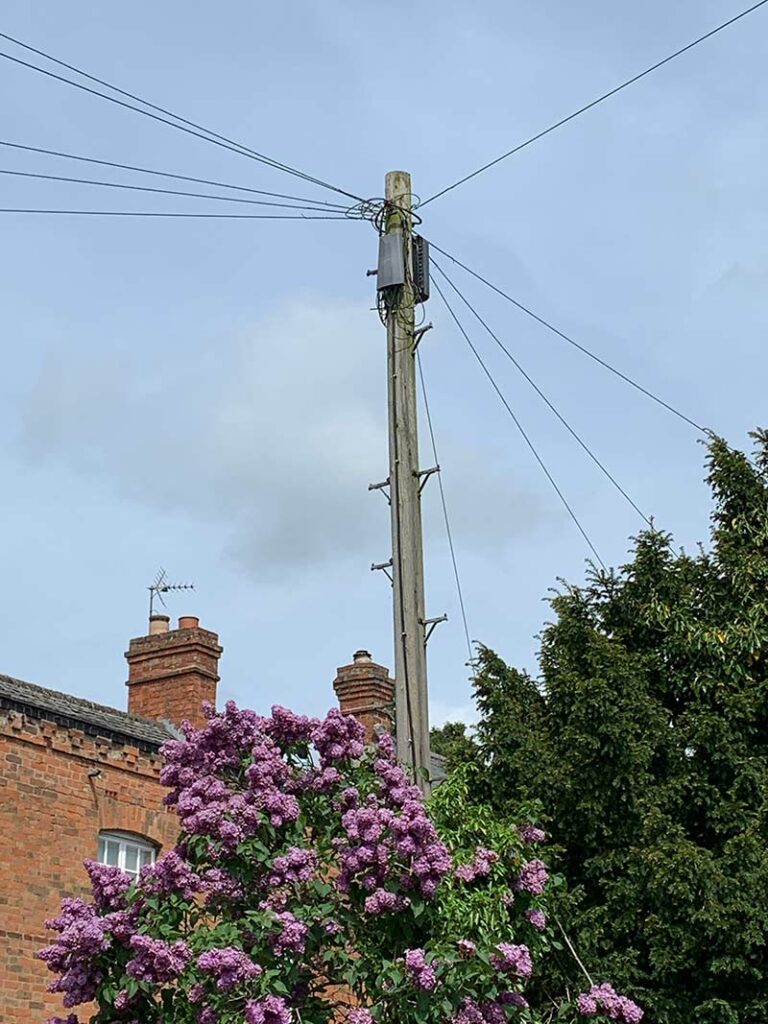Remember the days when we were just discovering the internet and we logged on using a dial-up service that bleeped and buffered for a very long time before connecting us? It seems like a lifetime ago, yet its successor Superfast broadband is now being replaced by Ultrafast broadband and that has implications not just for our broadband service, but also for our telephone connections.
Just as the UK rolled out Superfast broadband, by bringing fibre-optic cables to telephone exchange cabinets throughout the country (known as Fibre to the Cabinet or FTTC), the next phase, which is designed to futureproof our telecommunications, is Fibre to the Premises (FTTP). Otherwise known as Ultrafast broadband, this system will provide a consistent and dependable broadband service that will support the UK for future decades. FTTP broadband is carried the whole way between your premises and your telephone exchange by fibre-optic cable. These fibre-optic cables can be installed either underground in ducts or overhead using telegraph poles and in general will use the same routes as the old copper wire telephone cables.
So, if your current telephone service is supplied using underground cables, a fibre-optic cable will be installed between a nearby underground chamber and your premises. If your current telephone service is supplied using overhead cables fed from a telegraph pole, a new fibre-optic cable will be installed between the telegraph pole and your premises alongside the existing telephone cable.
BT Openreach, together with the Department for Media Culture and Sport, is looking to upgrade the whole of the UK’s telecommunications infrastructure and by 2025 all telephone lines delivered through copper wire will be disconnected and your landline services will actually be delivered through your broadband connection instead.
Once BT Openreach has implemented the infrastructure in a town or city, the telephone companies will be encouraged to transition all their customers to FTTP and in due course, the copper wire telephone lines will be cut off. There are still significant challenges – just as Superfast broadband was swiftly adopted in towns and cities and the transition made, rural areas can pose more of a problem, with great distances between properties and their nearest exchanges. Another challenge the providers have is to ensure that vulnerable customers, who may not currently use broadband, are assisted with the transition and that any devices they may use, like a Careline alarm, still works with the new technology.
What does moving to FTTP Fibre to the Premises mean for you and how can you access it?
FTTP or Fibre to the Premises, utilises the best technology available to deliver broadband and offers the best speeds, reliability and lowest latency of all available technologies. Ultrafast broadband speeds are up to ten times faster than current technologies and importantly FTTP has 70-80% fewer faults.
The infrastructure is being rolled out right now, but before an FTTP installation can take place at your premises, there must be a nearby fibre connection point – known as a Connectorised Block Terminal (CBT). The CBT is connected back to the exchange via fibre-optic cable and to your premises either from a nearby telegraph pole or underground chamber. Just as we had to wait for Superfast broadband to be rolled out in our specific area, the same applies to Ultrafast broadband. At Dalycom, we can tell you as soon as FTTP is available in your area and therefore when you can apply to have it supplied to your premises. Over 4m homes and businesses can already sign-up for FTTP. Should FTTP not be an option in your area, then the alternative is SOGEA (Single Order Generic Ethernet Access) and Dalycom can advise if that is likely to be the case in your particular location.
When the infrastructure roll out is complete to 75% of the premises in an area, the ‘phone companies stop selling new copper telephone lines to any new customers, so if you are building new premises and want broadband and telephone services, it is likely that copper will not be an option. BT Openreach will run both systems for a period of time until everyone can be migrated to FTTP and eventually the old network will be withdrawn.
 What does that mean for our telephone lines and switchboard?
What does that mean for our telephone lines and switchboard?
That’s where the exciting stuff comes in – because your telephone lines come into your premises via FTTP, all sorts of new switchboard technologies become available to you. We can supply a modern system whereby you can still have numerous extensions, but voice transmission occurs over your broadband connection. At home you would plug your handset into the back of your router hub instead of into the wall.
We recommend you talk to us about your requirements because this is not a one size fits all. For some customers utilising mobile alongside FTTP is the best solution, for others it’s not and it is easy to make the wrong decision if you don’t have all the available information in front of you. At Dalycom we get excited about the opportunities FTTP offers, but we also know the pitfalls, so if you’d like us to help you navigate the best solution for your business or indeed your home, give us a call now!
01509 410 410.
STOP PRESS: BT Group announced on 20 May 2024 that the switch off date has been extended to 31 January 2027. This delay offers additional time for businesses and consumers, especially those who are vulnerable, to transition smoothly to more advanced IP-based systems.

